stephen_lumsden
Well-known
I am currently using a lab Silverpan in UK to dev and scan my photos. I have a subscription of £45 for a dev/scan of 3 rolls a month and am quite satisfied with the results. I generally just get them developed in Xtol or Rhodinal at the moment though the lab does give you the choice for others. On average I can go through 4 films, so sometime drop off the excess ones to Take It Easy lab in Leeds (usually the stuff which I think can be done a bit cheaper, e.g. C41 ). All in all I guess I spend about £1000 on film and dev/scan per year.
I have just come back to film photography over the last year and had decided to go down this route and pay per month just in case my renewed interest was just a fad. I had a 35mm Minolta Dimage scanner about 15 years ago which I could not get sharp scans from and gave up. Now the dev/scan services with delivery via Dropbox is quite convenient.
I was thinking about just taking the hit and going up to the Gold subscription with Silverpan (£65/month for 4 hi res tiff scans with some free prints and option for a quasi drum re-scan on some shots). I bought a pixl-latr to scan photos with my FZ1000ii (with DCR-250 macro attachment) which should work in principle and will use this for old negatives at least (I shoot 35mm and 6*6 going to a max of 10*10 inches prints ). I am thinking this may be a bit work intensive and that may make things a bit of a chore (I really do not do much post processing, use Painshop Pro to touch up mainly black and white and thats it) and that may kill my enthusiasm.
Alternatively I could get a v850, but have bad memories of the old scanner I used to have and what a waste that was. It also takes up a lot of space.
I reckon I could save about £360 a year though doing scanning myself at home. That said it would take some investment and/or time up front.
My question is then:
At what stage is it wise to do your own scanning? 3/4/5 or 6 films a month. Basically I have the money at the moment to send it out to the lab so should I just go on as is and if I am still doing it in a year or two, come back to the home scanning questions.
I would be interested in knowing when other people decided to do more at home or just get a lab to do it. I guess this may be a more philosophical issue also.
I have just come back to film photography over the last year and had decided to go down this route and pay per month just in case my renewed interest was just a fad. I had a 35mm Minolta Dimage scanner about 15 years ago which I could not get sharp scans from and gave up. Now the dev/scan services with delivery via Dropbox is quite convenient.
I was thinking about just taking the hit and going up to the Gold subscription with Silverpan (£65/month for 4 hi res tiff scans with some free prints and option for a quasi drum re-scan on some shots). I bought a pixl-latr to scan photos with my FZ1000ii (with DCR-250 macro attachment) which should work in principle and will use this for old negatives at least (I shoot 35mm and 6*6 going to a max of 10*10 inches prints ). I am thinking this may be a bit work intensive and that may make things a bit of a chore (I really do not do much post processing, use Painshop Pro to touch up mainly black and white and thats it) and that may kill my enthusiasm.
Alternatively I could get a v850, but have bad memories of the old scanner I used to have and what a waste that was. It also takes up a lot of space.
I reckon I could save about £360 a year though doing scanning myself at home. That said it would take some investment and/or time up front.
My question is then:
At what stage is it wise to do your own scanning? 3/4/5 or 6 films a month. Basically I have the money at the moment to send it out to the lab so should I just go on as is and if I am still doing it in a year or two, come back to the home scanning questions.
I would be interested in knowing when other people decided to do more at home or just get a lab to do it. I guess this may be a more philosophical issue also.
astrosecret
Recovering rollei snob
can find a nikon 4000 for a couple hundred bucks its almost a no brainer. i enjoy doing my own work.
peterm1
Mentor
Recently my ex wife gave me a stack of old film negatives and slides from about 30 years ago when we were doing a lot of travelling together. I looked into options and especially as this was pretty much a "one-off" job of scanning (albeit a pretty big one of several thousand items to scan) it made more sense for me to not buy a much higher priced flat bed scanner or dedicated film scanner but to go old school. So instead I bought a bellows unit with a slide/negative holder (usually called a slide copier) attached. This allowed me to hook up a digital camera (the bellows unit was for M42 mount so I used an M42 to Sony adapter and used a 24 megapixel Sony digital camera) and then use this to scan a large number of slides and negatives quickly. The big advantage (apart from being cheap) is that each image took maybe 5 seconds to digitize once everything was set up and focused properly. A little initial experimentation was also needed with lighting and exposure. (The light I used was a cheap LED work-lamp about 15cm by 10cm rectangle with multiple LEDs. Nothing fancy was needed for a perfectly good result with even lighting.)
Once set up it was just a matter of picking up a slide - dropping it into the holder pressing the shutter button then removing the slide and repeating the process with the next one. Negatives were a little slower for obvious reasons. This is as opposed to a scanner which when set to hi res can take a minute or maybe several minutes to scan each item. The disadvantage is that many dedicated digital scanners come with their own software for image optimization, dust removal etc. and if the automation works can save a lot of post scan messing about. I had to rely on post processing on my PC so that time needs also to be factored in but there was no cost as I already had the software. On the whole I was happy with results though I did find that film images too often did not stand up to modern standards we are now used to with digital imaging. That is to say a lot of mine were not as sharp as I hoped and the exposures were poorer especially with slide films where exposure latitude is very limited. Getting rid of dust and scratches also consumes some time in post. Another advantage is that this kit is small and so can be put away in storage when not in use.
Just another option to consider.
Once set up it was just a matter of picking up a slide - dropping it into the holder pressing the shutter button then removing the slide and repeating the process with the next one. Negatives were a little slower for obvious reasons. This is as opposed to a scanner which when set to hi res can take a minute or maybe several minutes to scan each item. The disadvantage is that many dedicated digital scanners come with their own software for image optimization, dust removal etc. and if the automation works can save a lot of post scan messing about. I had to rely on post processing on my PC so that time needs also to be factored in but there was no cost as I already had the software. On the whole I was happy with results though I did find that film images too often did not stand up to modern standards we are now used to with digital imaging. That is to say a lot of mine were not as sharp as I hoped and the exposures were poorer especially with slide films where exposure latitude is very limited. Getting rid of dust and scratches also consumes some time in post. Another advantage is that this kit is small and so can be put away in storage when not in use.
Just another option to consider.
Ko.Fe.
Lenses 35/21 Gears 46/20
You could get digital camera and close up rig for negative hires pictures. Clumsy, but with this you'll have digital camera and some time to kill on converting, cleaning negatives digitally.
I can't find film format in OP. If it is 135, get Plustek with i and forget about lab scanning. It is tiny, neat device and current ones are using energy sufficient components.
I can't find film format in OP. If it is 135, get Plustek with i and forget about lab scanning. It is tiny, neat device and current ones are using energy sufficient components.
Doug A
Established
I never had the patience to wait for mail order photofinishing. When in 2012 Superstorm Sandy destroyed both nearby one-hour photo labs that were developing and scanning my XP2 negatives I switched to developing and scanning my own B&W negatives. I started with a Canoscan 8800f for both 35mm and 120, tried a Plustek 8100 for 35mm, and now use a digital camera for 35mm and an Epson V600 with a Lomography 120 Scanning Mask for 120. I typically develop and scan a roll of film and make an inkjet "contact" sheet on the same day.
Fjäll
■̷̛̈́̉̓́̽&
A digital camera with WiFi and a tilt screen paired with a sturdy stand and a light table can get you pretty far. The dedicated legacy scanners are getting old and more expensive.
OlivierAOP
medium format
I'm not familiar with the DCR-250 attachment, does it achieve variable magnification? If so all you're missing is a copy stand and a light source to scan. It takes me usually less than 10m to scan a roll (align camera, clean dust, take pictures), plus 1-2m per frame for post-processing (for B&W; colour is longer and I usually have it scanned and developed). I shoot about one roll a week.
To me it's worth it. I also develop the film myself
To me it's worth it. I also develop the film myself
stephen_lumsden
Well-known
thx guys
I will have a go at the camera scanning thing. At least for black and white, but may still leave C41 colour at the lab for dev and scan as that is only 25% of my workflow.
I will have a go at the camera scanning thing. At least for black and white, but may still leave C41 colour at the lab for dev and scan as that is only 25% of my workflow.
DownUnder
Nikon Nomad
Yes, scanning can be a boring and time-consuming chore - but if it's used in the right way (and with the right attitude), it will give you an immediate view of a anything you are doing wrong in your photography, and often as not let you consider the best ways to improve your images.
Indeed, those of us (most of us) who learn by making mistakes, can benefit greatly from this process.
As well, it lets you rescue negatives and slides that may not be optimum (in composition, contrast, colors or sharpness) by cropping, adjusting, fine-tuning.
Life's little lessons in photography, courtesy of your PC/laptop, scanner or camera, and of course the right software. Not exactly cheap to set up, but in this expensive-for-everything day and age, what is??
Processing, well, that's a different story - or tale of woes. Even B&W isn't as easy as just popping open a film cassette or unravelling a 120 roll, winding it on to a reel, closing the tank and Bob's your uncle. There is far more to developing films properly than that. Even C41 can be a challenge. But it's all part of the game of life in photography.
Me, even after 60+ years in the darkroom, I would much rather do my own, and control the process in its entirety from start to finish, than let some lab (far too many employing inexperienced kids who are paid minimum wage as casuals) mis-handle my images.
Food for thought here.
Indeed, those of us (most of us) who learn by making mistakes, can benefit greatly from this process.
As well, it lets you rescue negatives and slides that may not be optimum (in composition, contrast, colors or sharpness) by cropping, adjusting, fine-tuning.
Life's little lessons in photography, courtesy of your PC/laptop, scanner or camera, and of course the right software. Not exactly cheap to set up, but in this expensive-for-everything day and age, what is??
Processing, well, that's a different story - or tale of woes. Even B&W isn't as easy as just popping open a film cassette or unravelling a 120 roll, winding it on to a reel, closing the tank and Bob's your uncle. There is far more to developing films properly than that. Even C41 can be a challenge. But it's all part of the game of life in photography.
Me, even after 60+ years in the darkroom, I would much rather do my own, and control the process in its entirety from start to finish, than let some lab (far too many employing inexperienced kids who are paid minimum wage as casuals) mis-handle my images.
Food for thought here.
teddy
Jose Morales
Hello Stephen,
I'll keep it simple. If you LOVE your photography and the process of scanning and are tenacious and meticulate about detail and colour then
get a scanner and do it yourself. All my scans are done with an ancient Epson 4990 scanner. The colour scans are tough sometimes and require
patience and knowhow with colour correction. But if you love that, then do it.
If you can't be bothered messing about all that stuff above - just get your lab to do it and enjoy the photo taking process only.
If the scanning process does not bring you JOY (which it does to me - and because of my personality) then stick with your lab.
Don't kill they joy of taking memories of your family and the joy of photography or fumbling with your precious gear if you hate the scanning process.
Scanning requires, time, patience and tenacity for the process and the love of your photography.
All the best!
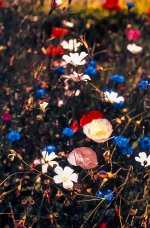
Expired Velvia 50
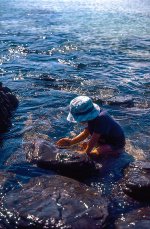
Expired Velvia 50
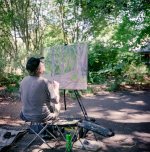
Expired NPH 400
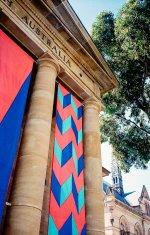
Expired NPS160
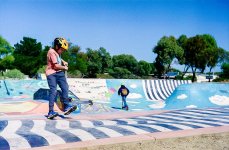
Expired NPS160
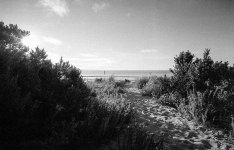
Tri-X
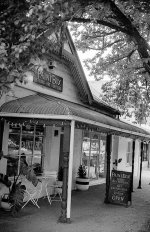
Tri-X
I'll keep it simple. If you LOVE your photography and the process of scanning and are tenacious and meticulate about detail and colour then
get a scanner and do it yourself. All my scans are done with an ancient Epson 4990 scanner. The colour scans are tough sometimes and require
patience and knowhow with colour correction. But if you love that, then do it.
If you can't be bothered messing about all that stuff above - just get your lab to do it and enjoy the photo taking process only.
If the scanning process does not bring you JOY (which it does to me - and because of my personality) then stick with your lab.
Don't kill they joy of taking memories of your family and the joy of photography or fumbling with your precious gear if you hate the scanning process.
Scanning requires, time, patience and tenacity for the process and the love of your photography.
All the best!

Expired Velvia 50

Expired Velvia 50

Expired NPH 400

Expired NPS160

Expired NPS160

Tri-X

Tri-X
ptpdprinter
Mentor
Processing black and white film is not a tale of woes. There is no mystery. It is easy. Just follow the instructions.Processing, well, that's a different story - or tale of woes. Even B&W isn't as easy as just popping open a film cassette or unravelling a 120 roll, winding it on to a reel, closing the tank and Bob's your uncle.
chipgreenberg
Well-known
I guess I'm contrary to most people here, I have a pro lab scan my film. I was never particularly strong in the darkroom. I printed color back in the day but wasn't the best with color corrections. I've worked extensively with the same guy at my lab that always scans my work so he knows my preference, and scans come back 90-95% perfect. I just leave it to a pro.
stephen_lumsden
Well-known
Nice photos and scans Teddy. You are right about doing what you enjoy.
Chip, I think I share your sentiments and prefer the idea of handing over to someone else, as long as I have the money and little time.
Nevertheless I will have a go at the dslr scan, as later on in my journey and I may have more time and less money.
Chip, I think I share your sentiments and prefer the idea of handing over to someone else, as long as I have the money and little time.
Nevertheless I will have a go at the dslr scan, as later on in my journey and I may have more time and less money.
OlivierAOP
medium format
I'll add that Noritsu lab scans are generally noisier than camera scans due to aggressive sharpening. And over here the tiff and/or high res upcharge is significant, whereas you get raw plus excellent resolution via camera. On the other hand the colour fidelity is pretty good. I mostly shoot B&W and struggle to convert colour negatives manually (I use a Viltrox 116T 95CRI light source).
julio1fer
Well-known
If you have near you a good lab with careful people, it is a treasure - by all means use it and put your energy into taking pictures. Maybe it is more expensive, maybe not, depending on how much you shoot.
If you don’t, you will need to develop and scan yourself. I have developed my own B&W for 60+ years, and scanned for about 15. More work, but there is also value in quickly viewing your results and commanding the complete process. You will need a quality printer besides scanning gear.
If you don’t, you will need to develop and scan yourself. I have developed my own B&W for 60+ years, and scanned for about 15. More work, but there is also value in quickly viewing your results and commanding the complete process. You will need a quality printer besides scanning gear.
Bob Michaels
nobody special
I have never considered scanning or not to be a cost minimization issue. Same as printing yourself or having someone else do it for you. If we are realistic we accept that it invariably would be cheaper to just hire a professional photographer than all the money we spend on camera equipment. We do all this because we love it, not because we save money.
I have always photographed, developed, scanned, and printed myself because I want the entire process, start to finish, to be mine. Although I must add that I gave up doing E-6 at home as there was no personal satisfaction of following the recipe exactly as written.
I have always photographed, developed, scanned, and printed myself because I want the entire process, start to finish, to be mine. Although I must add that I gave up doing E-6 at home as there was no personal satisfaction of following the recipe exactly as written.
ptpdprinter
Mentor
This does not apply to me. I could not afford to pay a professional photographer to do what I do. I guess if you owned a lot of Leicas or Hasselblads or Phase Ones it might be more economical for you just to hire a professional photographer.If we are realistic we accept that it invariably would be cheaper to just hire a professional photographer than all the money we spend on camera equipment.
I agree with this point of view, though my order is photograph, develop, print, and then scan only if I want to post something.I have always photographed, developed, scanned, and printed myself because I want the entire process, start to finish, to be mine.
Bob Michaels
nobody special
One thing that has always helped me save a lot of time while improving the quality of my output was to edit first and then only scan real winners. That means I can spent al much time as needed on those important frames without any wasted time on the remainder.
It seemed that 20 years ago everybody edited their negs or slides and then only scanned the best. Now people believe they cannot edit until they have a positive to work with. A negative just won't do for them even though it has higher resolution than any subsequent iteration and all the tonality data is there. I think the only people who cannot edit from negs are those who convince themselves that they cannot before they ever try.
BTW, same applies for transparencies. Process 3 rolls of 36 exposure E-6, cut and manually put 108 frames into mounts for the next step which is to throw about 100 of them away and keep about 8 winners. You will rapidly learn that sequence needs revision.
It seemed that 20 years ago everybody edited their negs or slides and then only scanned the best. Now people believe they cannot edit until they have a positive to work with. A negative just won't do for them even though it has higher resolution than any subsequent iteration and all the tonality data is there. I think the only people who cannot edit from negs are those who convince themselves that they cannot before they ever try.
BTW, same applies for transparencies. Process 3 rolls of 36 exposure E-6, cut and manually put 108 frames into mounts for the next step which is to throw about 100 of them away and keep about 8 winners. You will rapidly learn that sequence needs revision.
teddy
Jose Morales
One thing that has always helped me save a lot of time while improving the quality of my output was to edit first and then only scan real winners. That means I can spent al much time as needed on those important frames without any wasted time on the remainder..
That is a discipline I'm currently working to perfect - ONLY choose the best ones of a roll. I'm slowly getting there. It's best not to waste time.
Tom R
Established
That is a discipline I'm currently working to perfect - ONLY choose the best ones of a roll. I'm slowly getting there. It's best not to waste time.
This is a reasonable approach. But consider this: One reason that I continue to work with film (for my personal work) is that I keep organized and detailed books of negative strips ... since the late 1980s. Along with those three-ring binders containing lots of negatives, I have contact sheets. I periodically review those contact sheets and discover negatives that I never scanned at the time because what I perceived as "winners" and "losers" has changed/evolved over the decades. I am so grateful that of the many mistakes I've made over the years, maintaining complete, organized records of photographs (negatives, contact sheets, etc.) has paid off in unexpected ways.
Of course, everyone's mission and corresponding workflow is different, so YMMV.
Share:
-
This site uses cookies to help personalise content, tailor your experience and to keep you logged in if you register.
By continuing to use this site, you are consenting to our use of cookies.
